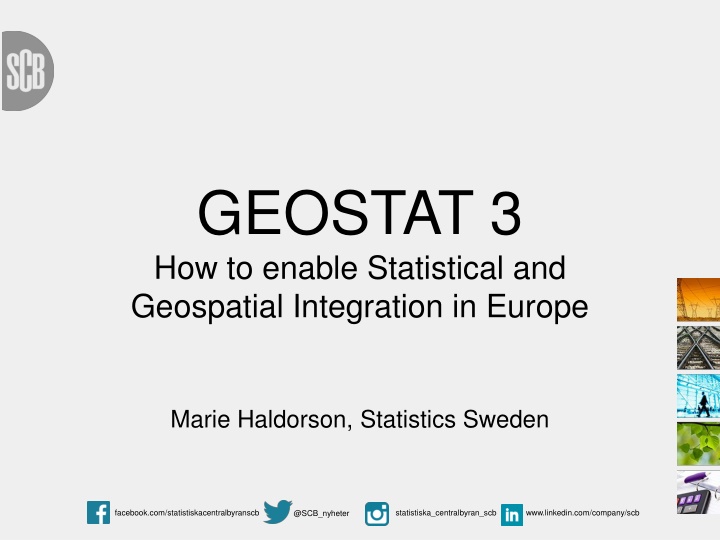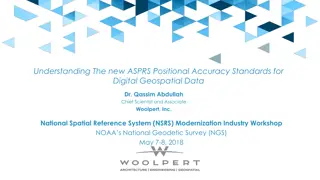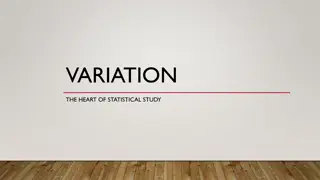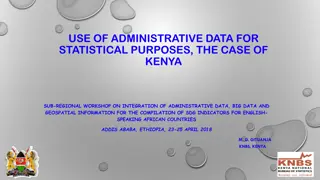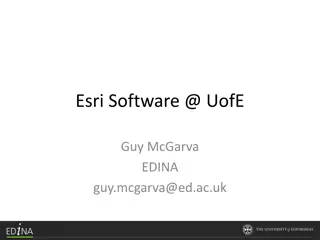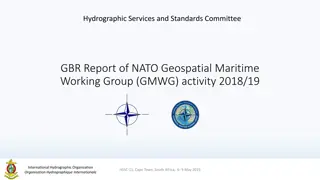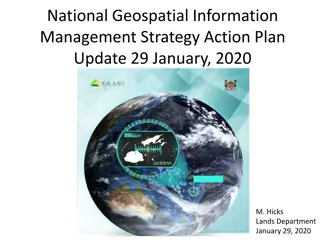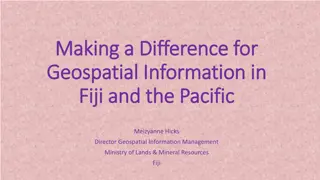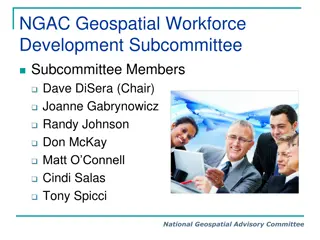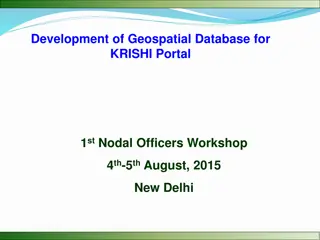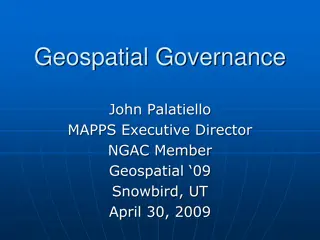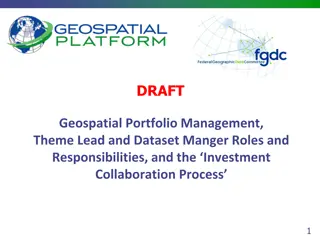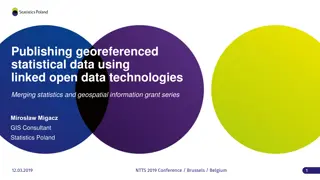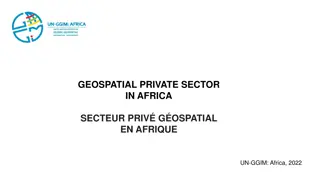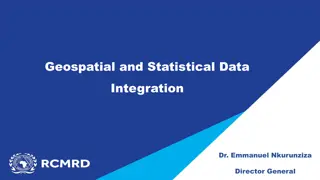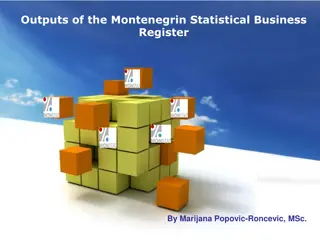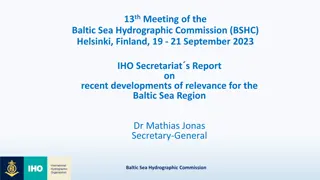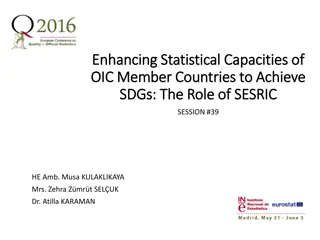GEOSTAT.3: Statistical and Geospatial Integration in Europe
Explore the GEOSTAT project, focusing on developing the European adaptation of the ESS-SGF and its implementation in EU member states. Key objectives include testing the ESS-SGF for the 2030 Agenda and supporting EFGS initiatives. The project involves a collaborative effort by various NSIs, sub-contractors, and Eurostat. Detailed deliverables include strategic and technical recommendations for implementing the ESS-SGF. Technical and strategic aspects, linked data, governance, and interactions with global and European entities are highlighted. Learn about the project team, objectives, and the importance of statistical-geospatial frameworks in Europe.
Download Presentation

Please find below an Image/Link to download the presentation.
The content on the website is provided AS IS for your information and personal use only. It may not be sold, licensed, or shared on other websites without obtaining consent from the author.If you encounter any issues during the download, it is possible that the publisher has removed the file from their server.
You are allowed to download the files provided on this website for personal or commercial use, subject to the condition that they are used lawfully. All files are the property of their respective owners.
The content on the website is provided AS IS for your information and personal use only. It may not be sold, licensed, or shared on other websites without obtaining consent from the author.
E N D
Presentation Transcript
GEOSTAT 3 How to enable Statistical and Geospatial Integration in Europe Marie Haldorson, Statistics Sweden facebook.com/statistiskacentralbyranscb statistiska_centralbyran_scb www.linkedin.com/company/scb @SCB_nyheter
The GEOSTAT Projects GEOSTAT 1: Creating a population grid for Europe (2010-2014) GEOSTAT 2: A point-based foundation for statistics (2015-2016) GEOSTAT 3: The ESS Statistical Geospatial Framework (2017-2018)
GEOSTAT 3 Objectives 1. Develop the European adaption of the SGF (ESS- SGF) and provide recommendations on how to implement it in EU member states within and outside NSIs; 2. Test the usefulness of the ESS-SGF and its implementation on selected indicators for the 2030 Agenda; 3. Support EFGS, disseminate results, benefit from GGIM activities etc.
Project Team Coordinator: Sweden Participating NSIs: Austria Estonia Finland Netherlands Norway Poland Portugal Sub-contractors: Kartverket, Norway BKG, Germany Marina Backer (EFGS Secretary) Sponsor: Eurostat
WP-1: Develop a European Statistical Geospatial Framework 5 4 3 2 1
Deliverables of WP1 A detailed description of all the principles and elements of the ESS-SGF and the differences with the global SGF. Strategic and technical recommendations for the implementation of the ESS-SGF in NSIs but also, where needed and/or possible, in other public authorities concerned.
Technical aspects Strategic aspects Linked data CSPA SDMX Principle 5 ELF GSBPM services Principle 4 Responsi- bilities OSKARI TJS Institutional arrangements Principle 3 OGC Principle 2 Governance INSPIRE Core data Principle 1 Meta data Roadmap!
Interaction GGIM on Global and European level NMCA:s and EuroGeographics Eurostat Projects INSPIRE UNECE Geospatial Standards Community
Input some examples GGIM Documents on the GSGF National experieces GEOSTAT 2 results GGIM: Europe reports UNECE Workshop on Standards (Stockholm Nov 2017)
WP-2 Testing the ESS-SGF Applying the ESS-SGF to the indicator framework of the 2030 Agenda Applying the ESS-SGF to Census indicators (1 km grid) Implementing technical considerations from WP 1. Choice of indicators to be tested!
More information: http://www.efgs.info/geostat/
